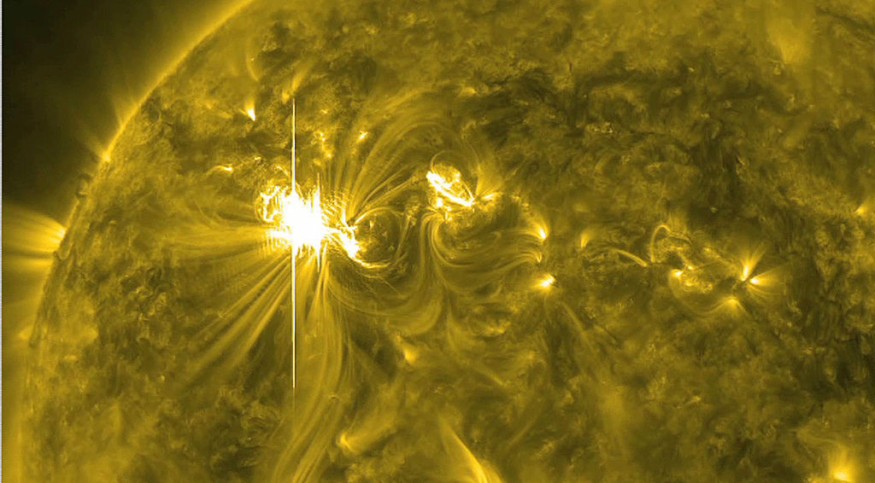After space weather officials issued a geomagnetic storm watch on Tuesday, a geomagnetic storm is expected to impact Earth on Wednesday and Thursday.
The continuing Coronal Mass Ejection (CME) from the sun is heading towards Earth and will create the geomagnetic storm. The sun emits a solar flare which generates CME.
CME could cause a geomagnetic storm that can disrupt Earth's magnetic field, affecting technological signals and digital communications.

Solar Storm Warning: Class G1 Geomagnetic Storm Issued After Sun Eruption
The Space Weather Prediction Center (SWPC) of the National Oceanic and Atmospheric Administration (NOAA) has issued a new Geomagnetic Storm Watch - Category G1 for Wednesday and Thursday.
The Geomagnetic Storm Watch - Category 1 (Class G1) is for a small event in which a coronal mass ejection (CME) from our sun collides with Earth's magnetic field, generating a geomagnetic storm that might interrupt satellite, internet, and radio communications.
On Feb. 6, a solar flare generated by a solar storm in our sun ejected a coronal mass ejection (CME) toward Earth.
CME Explained
According to the National Aeronautics and Space Administration (NASA), a CME is the abrupt and decisive discharge of gas and magnetic fields from the sun's outer solar atmosphere, the corona.
The sun in our solar system comprises highly compressed gas and magnetic fields.
These magnetic fields frequently fluctuate, according to NASA, causing the phenomena.
ALSO READ : SpaceX Says Geomagnetic Storm Destroys 40 Starlink Satellites After Elon Musk 'Harmed' Astronomy
Because of the heat and energy it emits, the sun is the primary generator of both space weather in our solar system and the climate on our planet.
Solar storms are composed of various eruptions, including solar flares and coronal mass ejections (CMEs).
A solar flare is a brief burst of light from the sun that can last a few minutes to many hours.
On the other hand, a CME is a massive cloud of magnetized particles that moves slower than light yet can trigger a geomagnetic storm on Earth, according to NASA.
Geomagnetic Storms Defined
Storms are categorized into five - G1, G2, G3, and G5. According to the NOAA, G1 storms can damage power system functioning, while G5 storms can cause widespread power grid breakdown or blackouts.
Category 1 or class G1 of the official geomagnetic storm watch, according to the NOAA, is the lowest of the five levels on their geomagnetic storm or solar storm rating.
The NOAA-SWPC classifies the G1 level as a small impact on the other end of the scale from the G5 extreme effect.
A class G1 level indicates that mild power grid oscillations are possible on Earth's power systems. The functioning of spacecraft satellites is affected slightly.
Migratory animals may potentially be harmed by visible aurora at high latitudes, like in Michigan and Maine in the United States.
The CME may influence places poleward of 60 degrees Geomagnetic Latitude, where power outages, signal abnormalities, and radio communication failure may occur.
RELATED ARTICLE : Solar Storm Warning: Flares Are Heading Towards the Earth, Could It Take Down Communications Lines Worldwide?
Check out more news and information on Space in Science Times.












